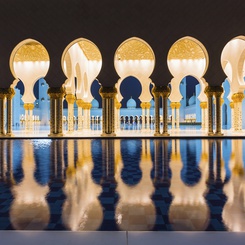Ashok Som, Prof., Co-Director of ESSEC-Bocconi EMiLux program, Chair of the Management Department at ESSEC Business School, and luxury products and services expert, shares his recent study of emerging luxury brands and focuses on the conditions and competencies required for their success
Tip of your tongue and back of your mind
Dior, Chanel, Gucci, Rolex, Dunhill, Armani, Vuitton – prestigious names that we all recognize in an instant, the time it takes to say “Ritz”. Daslu, Concern Kalina, Ganjam, Shang Xia – these might take a little longer, cause a frown to appear as you search in the back of your mind, or even raise an eyebrow or two. Do you know them? Chances are, unless you’re an expert, a dedicated follower of fashion or a traveler to the world’s great cities, that these names are unknown to you. And for citizens of developed countries, steeped in decades and even centuries of high-end brands, that is all quite normal. For these are among the newcomers to the block, just some of the emerging brands from the BRICS countries that have risen to the challenge to deal in luxury. Far from exhaustive, there are several other luxury market brands born in emerging countries that aspire to be world luxury brands of the future. These brands now face the double challenge to defend their positions in their domestic environments and, if possible, to conquer market shares abroad.
Unlike markets in the Europe, Japan and USA where customers have reached a certain level of understanding and sophistication, the emerging markets still demonstrate branding infancy. On the one hand, information asymmetry, misguided political regulations, inefficient judicial systems, lack of proper IPR rules, and complex labor laws make it difficult for them to thrive, innovate and create. On the other hand, the mindset, complexity of business structures, diversity of demographic composition and geographic spread require a certain unique branding philosophy. Within this context, what are the conditions and the competencies that can help emerging economies home-grown luxury companies achieve their goals?
Brand Heritage – an age-old concern…
The heritage and story of a brand is usually the starting point for emerging market luxury brands. Brazil’s Daslu, for example, has the potential to expand into other South American markets such as Argentina or Chile given that it is very well-established and well-known in its home market and appareled with the legacy of more than 50 years of existence. It is also considered a landmark for luxury for Brazilian consumers since it was the first point of sale for many luxury goods brands in Brazil. Expanding into other international markets such as North America, Europe, or Asia, however, would require not only more time, but greater resources for the brand as has been the example of another luxury creator in Brazil, H. Stern.
Building the heritage of the brand is important in general for all aforementioned emerging market luxury brands given the high expected growth rates of each of the countries and the slowdown of today’s economic leaders such as the United States. It is important for these countries to have established their luxury brands first on their domestic markets in order to reap the benefits of having a luxury brand with a heritage by the time they become a leading economy.
Historical association
Emerging market luxury brands might also be successful outside of their home markets if they are associated with an era that is considered “glamorous.” The example of Shanghai Tang is relevant here as it was perceived as a “kitschy touristy brand” that had nothing luxurious about it as perceived by Western customers. Westerners picked up a souvenir, but for the most part the product offering was not considered authentic or luxurious. This was because the brand’s designs were associated with the Shanghai of the 1920s and 1930s, and considered not such a glamorous part of China’s heritage. On the other hand, NE-Tiger has the potential given its association and inspiration from the Tang dynasty, a dynasty considered very fashionable and also a time when China was thriving and considered a world power. The same can be said for India’s Ganjam jewelry brand. The brand is associated with what is perceived to be a beautiful period of India’s history, where the Maharajas lived opulently and wore jewelry specially ordered not only from local craftsmen but also from brands such as Cartier and Chaumet.
Use your country’s hallmarks
To be successful internationally it is almost mandatory that an emerging market brand meets with success on its home market. To do this it needs to be associated with the traditional techniques and craftsmanship that are unmistakably associated with its country of origin. Examples would be the Indian design used by Manish Arora, silks used by Kimaya, or leather used by Hidesign. Another example would be the techniques used by Shang Xia, again associating itself with China’s heritage and going to back to when China was considered a world leader in fine craftsmanship.
Association…and no association
Generally associating one’s brand with ones country’s positive image can be leveraged to a great extent to build the brand’s reputation. An excellent example is that of Carlos Miele or Lenny from Brazil. These brands are associated with what is perceived by the West as a very glamorous part of Brazilian lifestyle with ads featuring the Ipanema beach evoking the idea that Brazil is a colourful place, with beautiful women who are familiar with this lifestyle and who like to have fun and party – hence the colourful designs. This is also part of the reason that Brazil’s Havaianas brand did so well and became the world leader in beach footwear.
Finally, emerging market brands may opt for no association, or barely any, with its emerging country of origin, as with H. Stern. Most consumers are unaware of its Brazilian origins with its designs that are comparable to other luxury jewelry companies worldwide. However, although there is a Brazilian influence in some of the pieces in its product range, the company does not openly associate itself with Brazilian culture, something it shares in similarity with its American competitor, David Yurman.
International expansion, growth and the way forward
Most emerging market luxury brands are still family and/or privately owned, with the exception of a few such as Shanghai Tang (owned by Richemont). It is therefore difficult to determine how successful these brands really are, given the limited information about earnings and other financial data.
However, emerging brands may expect – if they get things right – themselves to become potential prey for conglomerates. The usual scenario is for conglomerates to wait until brands prove profitable a before acquiring them. Indeed, for conglomerates, emerging market luxury brands present a considerable opportunity, enabling them to increase the brand’s competitiveness and presence on its domestic emerging market while supporting its development and growth in western markets where they may already possesses distribution networks and influence with retail space opportunities. Moreover, the conglomerate would be able to increase distribution and manufacturing capabilities in these emerging markets, as well as create synergies between businesses. Luxury conglomerates such as Richemont, or private equity investors like L Capital (the PE arm of Group Arnault) have already invested, bought and also exited several emerging market luxury brands and are at the forefront of this upcoming trend, certain to reap the benefits of this fast growth.
Useful links:
- The Road to Luxury: The Evolution, Markets and Strategies of Luxury Brand Management, Ashok Som, Wiley.
- Organization Redesign and Innovative HRM. Ashok Som, New Delhi: Oxford University Press.
- International Management: Managing the Global Corporation. Ashok Som, Mcgraw-Hill, UK.









